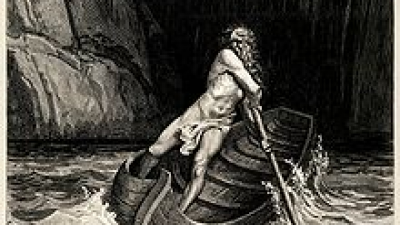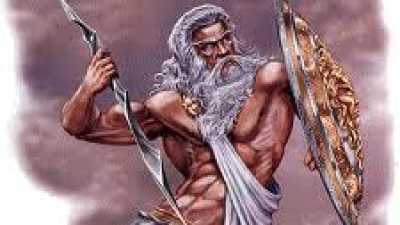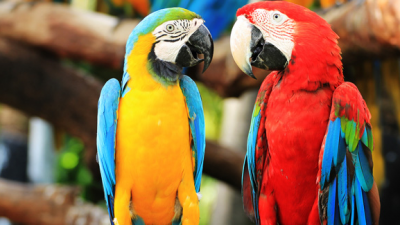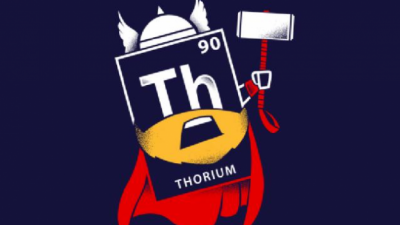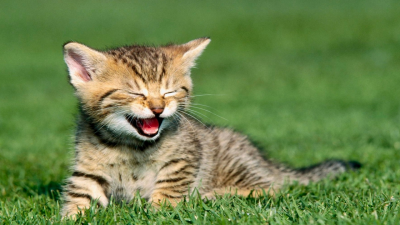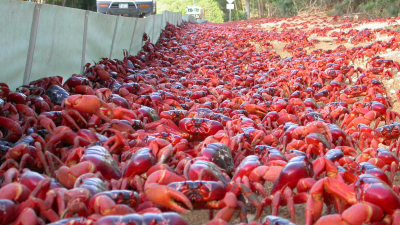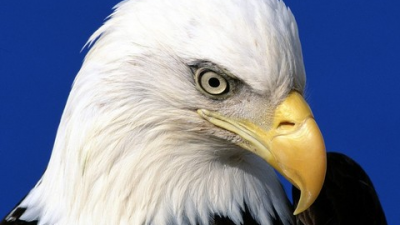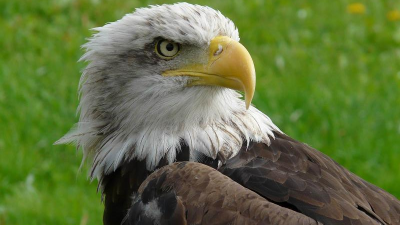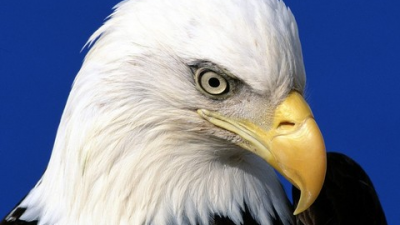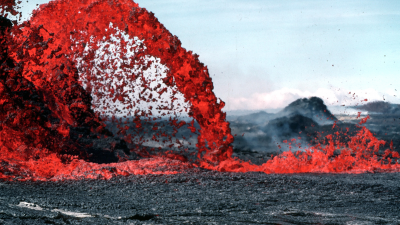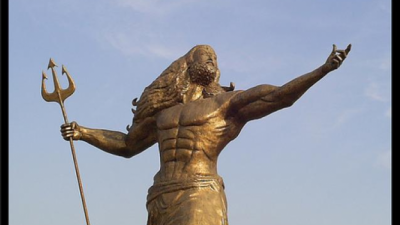Mythological birds
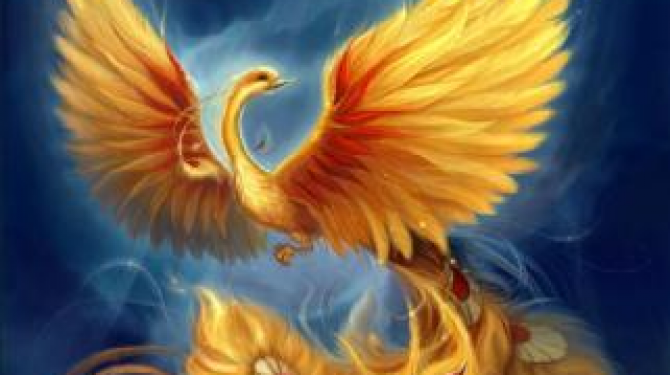
Source: listas.20minutos.es
Mythological birds, whether giant, fire, protective, etc ... have been a constant in most mythologies around the globe. Here are some of these legendary birds: (Includes hybrids such as the tap, hypogriff, etc.)
TOP 40:
Víðópnir
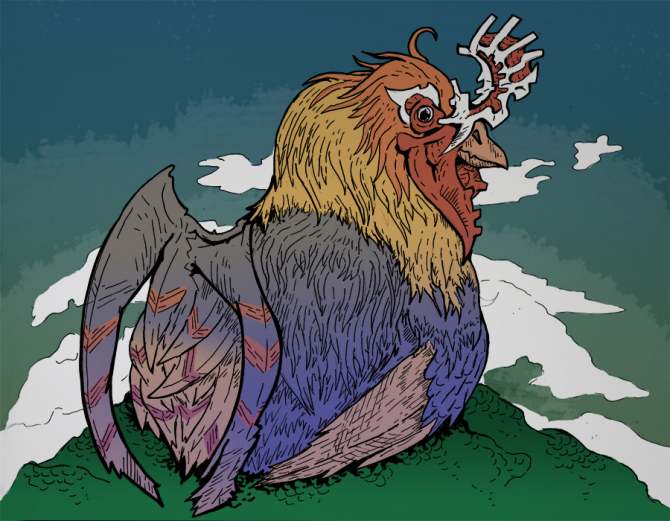
From Norse mythology. According to the poem Fjölsvinnsmál, Víðópnir or Víðófnir is a rooster that sits atop the Mímameiðr, a tree that is very often taken as equivalent to the tree of the world Yggdrasil. On the other hand, a name that does not appear in any other medieval written source.
TOP 39:
Piasa
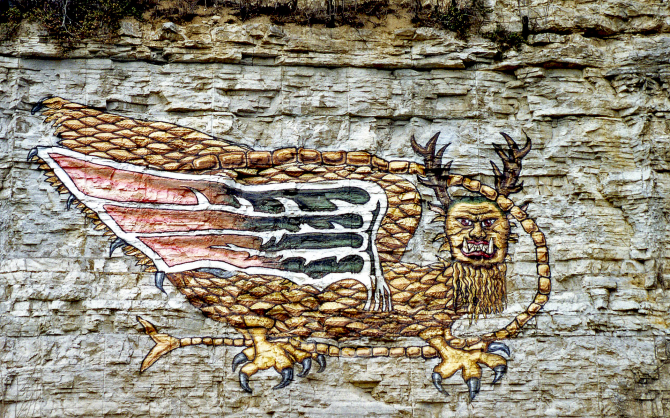
The piasa is a supposed legendary creature typical of the mythology of Native Americans, especially in the state of Illinois and the area around the Mississippi River. It is a winged being that comes once a year to collect their food and thus stay until the following year.
TOP 38:
Gandaberunda
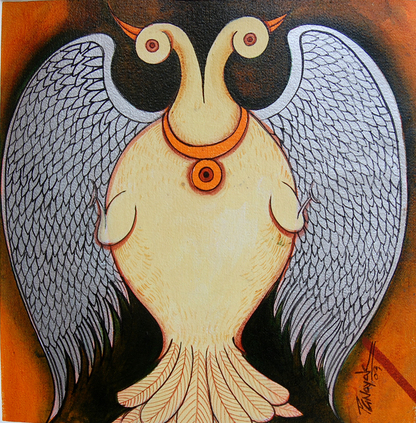
The Gandaberunda (also known as the Berunda) is a two-headed mythological bird of Hindu mythology believed to possess a magical force.
TOP 37:
Base
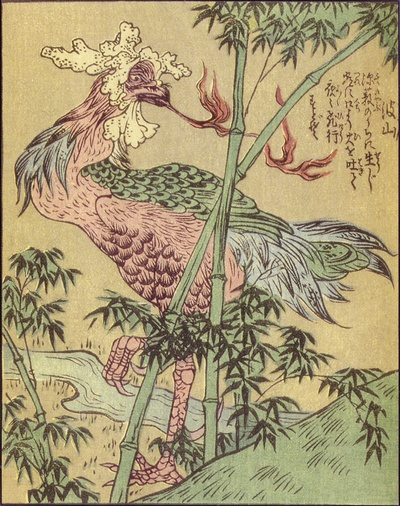
The Basan is a creature of the Japanese popular imaginary. The myth of the Basan indicates that it is found in Ehime prefecture, particularly in the foothills of the mountains. It is a rooster the size of a mountain. When you exhale, fire-fox boot, so that the atmosphere seems to be lit by ghostly flames. During the day, it hides inside the bamboo shoots, but at night, it emerges, and goes to the nearest towns. When approaching, it produces a peculiar sound: "Basabasa". The people who heard this clucking, have looked out, just to see that there was nothing. It is a benign creature and does not harm the human being.
TOP 36:
Chickcharnie
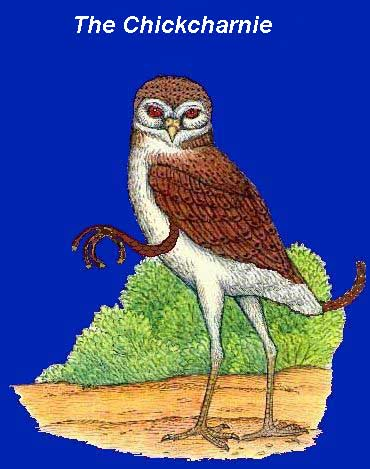
The Chickcharnie, Chickcharney or Chickcharnee is a mythical creature, which lives in the forests of Andros Island in the Bahamas. He is described as a furry and feathered being, similar to birds; and is considered unpleasant. In the common legend, if a traveler meets a chickcharnie and treats him well, he will be rewarded with good luck. However, treating a chickcharnie badly will result in a person's bad luck. These creatures would live in the tops of the tallest trees.
TOP 35:
Gullinkambi
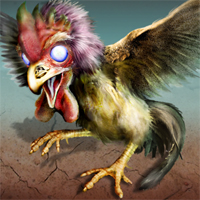
Gullinkambi is, in Norse mythology, a rooster that lives in Valhalla and awakens the Einherjar every morning. His song will also mean the beginning of Ragnarök (final battle between the Gods and the Jötnar, led by Loki.).
TOP 34:
Estirge
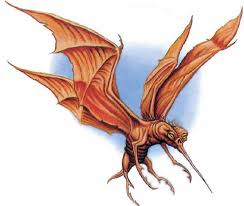
The estirge is a flying being of Roman mythology that sucks the blood to survive. This being is shaped like a bird with wings similar to those of a bat and yellow eyes, 4 legs with which its victims are seized and an elongated beak with which it sucks the blood. The legend says that, unless the man is killed, when he attacks, it is almost impossible for him to take off from his victim's body until he finishes sucking his blood, and those who are attacked by her die quickly. Stirges have very good eyesight and a good nose, so it is easy for them to detect people to attack. When he finishes with his victim, the woman sleeps for days with a very deep sleep; this moment the hunters take advantage of to attack them
TOP 33:
Deñ
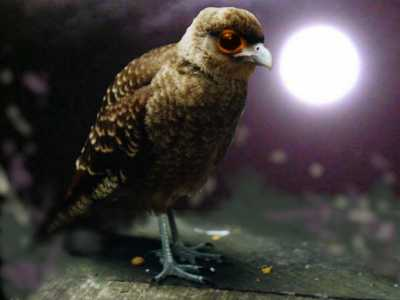
The Deñ, is a mythological nocturnal creature, belonging to the Chilota mythology. The Deñ would have a similar appearance to that of a tiuque, however it differs from this, in that the Deñ would have larger, luminous eyes semi-hidden by a fine brownish plumage; very similar to those of an owl. Legend has it that the Deñ, along with the Coo, Raiquén, and the Mandao, are birds closely related to the Wizards of Chiloé. Among these birds, the Deñ with the Coo would be the most frequent supernatural forms in which the sorcerer would transform.
TOP 32:
Sarimanok
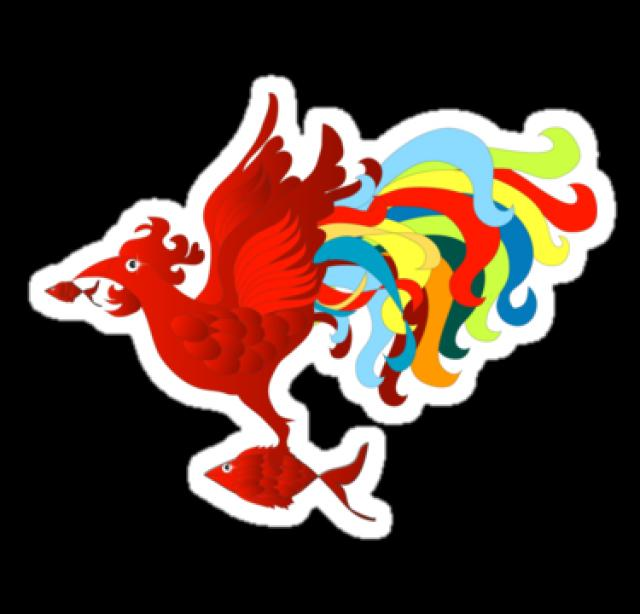
The Sarimanok is a mythical bird of the Maranao culture that originates from Mindanao, an important island in the Philippines. It is the legendary bird that has become an omnipresent symbol of Maranao art. It is described as a bird with wings of varied colors and tail with feathers, with a fish in its beak or claws. The head is profusely decorated with parchment sheets. It is said to be a symbol of good fortune.
TOP 31:
Birds of the Estinfalo
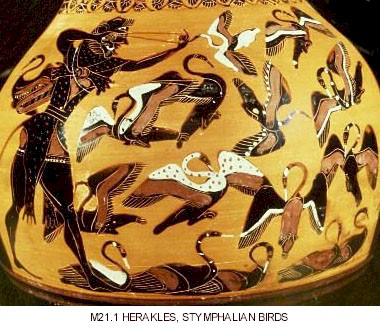
In Greek mythology, the birds of the Estinfalo were birds that had bronze beaks, wings and claws and whose poisonous droppings ruined the crops and were also carnivorous. They populated the region and the forest around Lake Estínfalo.
TOP 30:
Coo
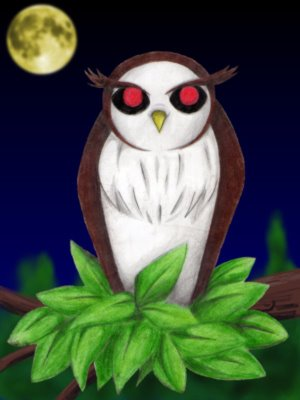
The Coo is a nocturnal creature belonging to the Chilota mythology. This word would also be used to refer to the Concón de Chiloé; Most likely, this legend was inspired by this true animal. The Coo would look like an owl with large, very bright round eyes, and a plumage of a brownish color; very similar in size and shapes to the Concón de Chiloé. Legend has it that the Coo, like Raiquén, Mandao, or Deñ, are birds closely related to the Wizards of Chiloé. Among these birds, the Coo next to Raiquén would be the most frequent supernatural forms in which the sorcerer would transform.
TOP 29:
Pouakai
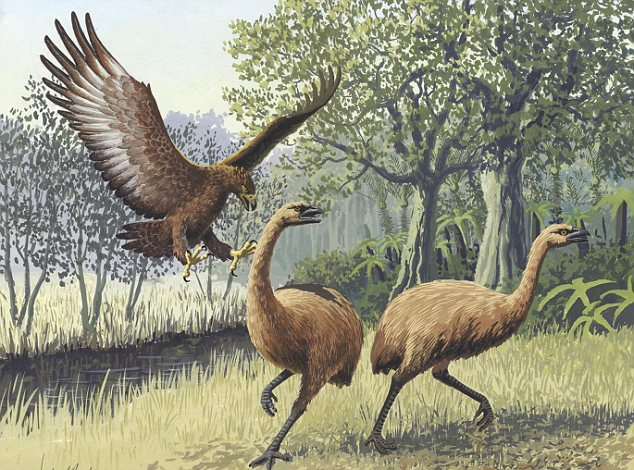
The Pouakai or Poukai is, in Maori mythology, a monstrous bird that is capable of carrying people to its nest in the mountains where it eats them. The Pouakai is surely based on the gigantic and extinct Haast eagle that hunted giant moas, which could have hunted and eaten humans. Haast's eagle became extinct about 500 years ago due to the depredation of the Maori over their prey, the moas; with what ended up becoming a legend. They represented the eagle in cave paintings.
TOP 28:
Chonchón
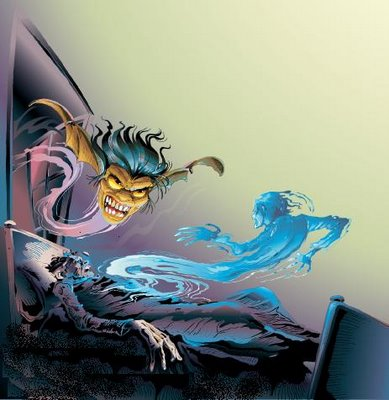
The Chonchón, Chon-chon, Chuncho, Quilquil or Tué-tué is a creature belonging to the Mapuche mythology, and subsequently assimilated to Chilean mythology and some regions of Argentina. The Chonchón is presented as a strange bird of gray ashen feathers, formed from a horrible human head; from which would be born sharp claws and huge ears that he uses as wings to fly. This creature would emit a fateful scream that would sound "tué, tué". Originally in the Mapuche culture, the legend referred to as Chonchón the transformation that Calcu would perform; which practices evil with the help of the wekufe spirit. After being assimilated this belief to the tradition of the colony of Chile and some areas of Argentina, the transformation to Chonchón would be associated with the power of the witches and sorcerers who serve the devil.
TOP 27:
Peng
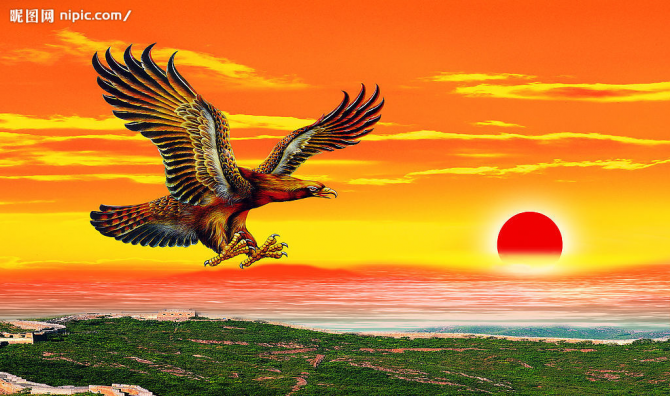
Peng or Dapeng is a giant bird that transforms into a Kun, a giant fish in Chinese mythology.
TOP 26:
Mayura
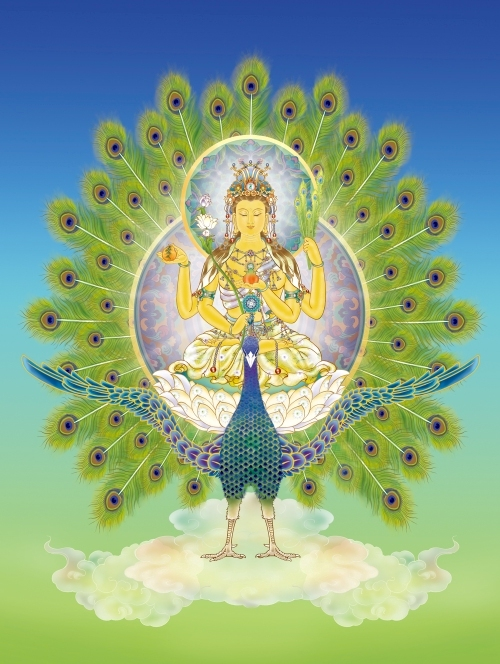
Mayura (a Sanskrit word peacock) is one of the sacred birds of Hindu mythology. Legend has it that the Mayura was created from the feathers of Garuda, another mythical semi-divine bird of Hindu mythology. Garuda is believed to be a vahana (transport) of Vishnu, one of the Trimurti. In the images of mayura as a mythical bird, it is represented by killing a snake, which according to a series of Hindu writings, is a symbol of the cycle of time.
TOP 25:
Turul
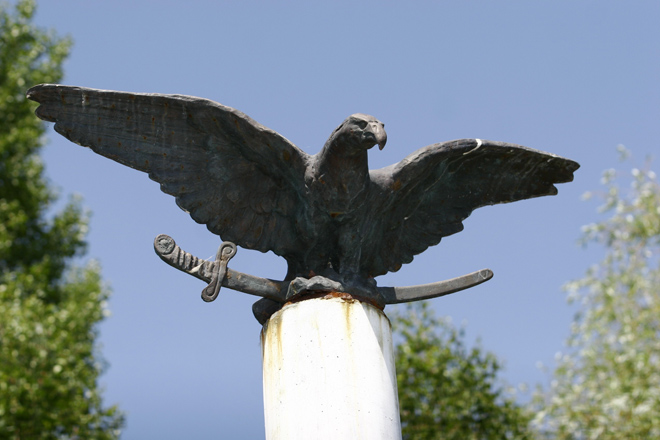
The mythical bird Turul is according to ancient Hungarian legends, a huge hawk or eagle, which was an intrinsic part of the religious life of this town from western Asia. According to pre-Christian Hungarian mythology, the Turul bird lived on top of the tree of life, which contained the universe. The bird took care of the souls of newborns in the form of small birds that lived in the treetop. The Turul was the messenger between gods and humans, the guardian of order and balance in the universe.
TOP 24:
Hamsa
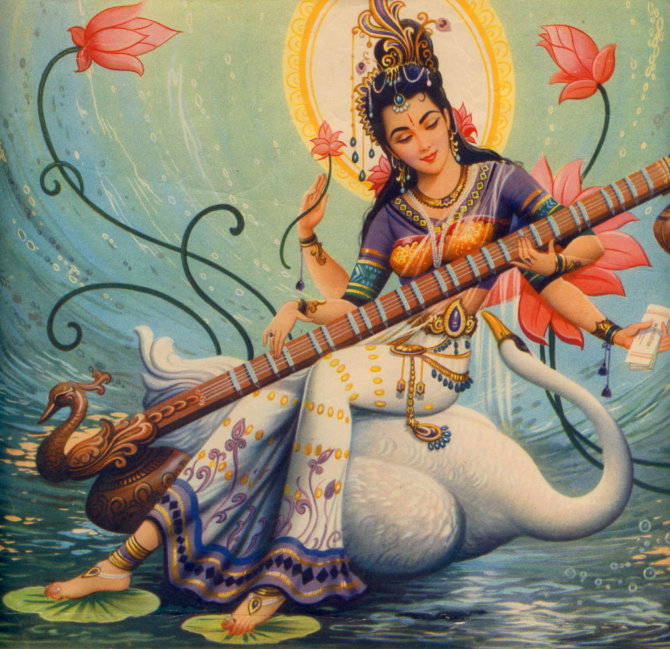
The jansá or hansá (frequently written hamsa, due to the influence of the English language) is a Sanskrit word that represents a bird like the goose or the swan. In European texts before the twentieth century it was believed that they talked about the swan, but nowadays it is considered that it is the Indian sands. In Indian culture it is considered as a sacred bird in addition to being used as a symbol and decorative element. Believers of Hinduism say they have the power to eat pearls and separate milk from water (if a mixture of both is offered). In many texts he is exalted as the king of birds. It is also said that they possess the sacred knowledge of the Bráhmanas.
TOP 23:
Cocatriz
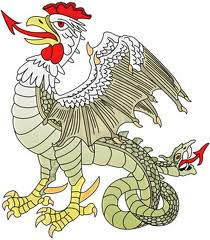
A cocatrix or cockatrice is a legendary creature that looks like a rooster with a lizard's tail.
TOP 22:
Bennu
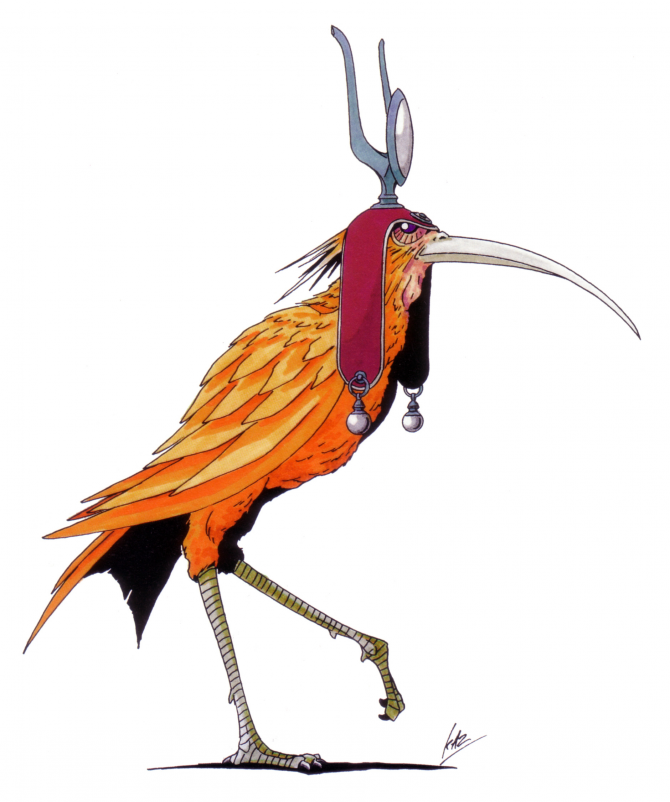
Bennu was a mythological bird of Ancient Egypt, the Greek Phoenix. It was associated with the floods of the Nile, death, and the Sun. As the Bennu represented creation and renewal, it was related to the Egyptian calendar, in fact, the temple of Bennu was famous for clepsydras and other measuring devices the time they guarded him. Represented as a cinderella royal heron or yellow Wagtail, touched with the Atef crown of Upper Egypt, flanked by two feathers; also like an eagle with red and gold plumage. Sometimes as a man, with a heron's head, next to a Persian, the sacred tree of Heliopolis, wearing white or blue mummy clothing, under a long transparent cape; or associated with the willow tree, in which it would have settled at the beginning of time.
TOP 21:
Hercinia
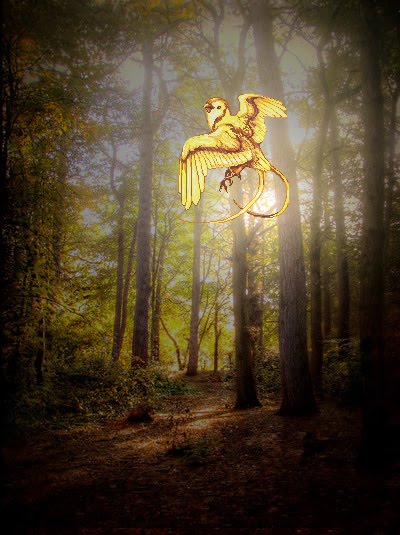
Hercinia is a bird with bright feathers of medieval bestiaries. They were in the Hercínico forest, in the south of Germany, where their brilliant feathers kept paths lit in the thicket of the forest.
TOP 20:
Harpies (or Harpies)
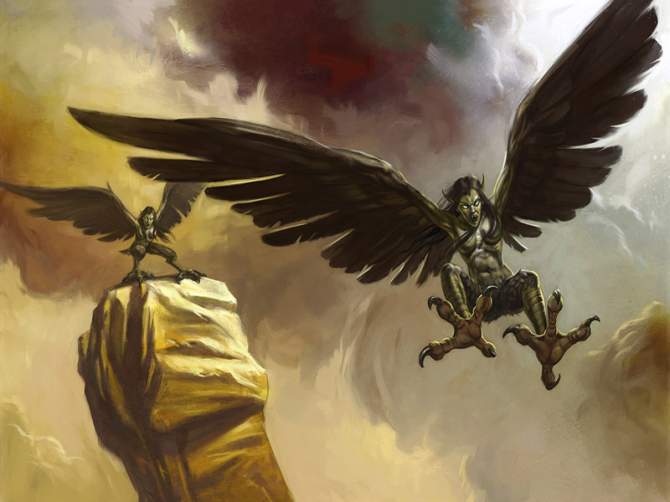
In Greek mythology, the Harpies or Harpies were initially beings with the appearance of beautiful winged women, whose main task was to enforce the punishment imposed by Zeus on Phineus: using his ability to fly, they continually stole his food before he could take her. This led them to fight against the Argonauts. In later traditions they were transformed into malefic geniuses with the body of a bird of prey, horrendous woman's face, bear ears and sharp claws, which carried storms, pests and misfortune. This is the form that eventually prevailed and has survived until today. Suggested by Dami2012
TOP 19:
Sirin
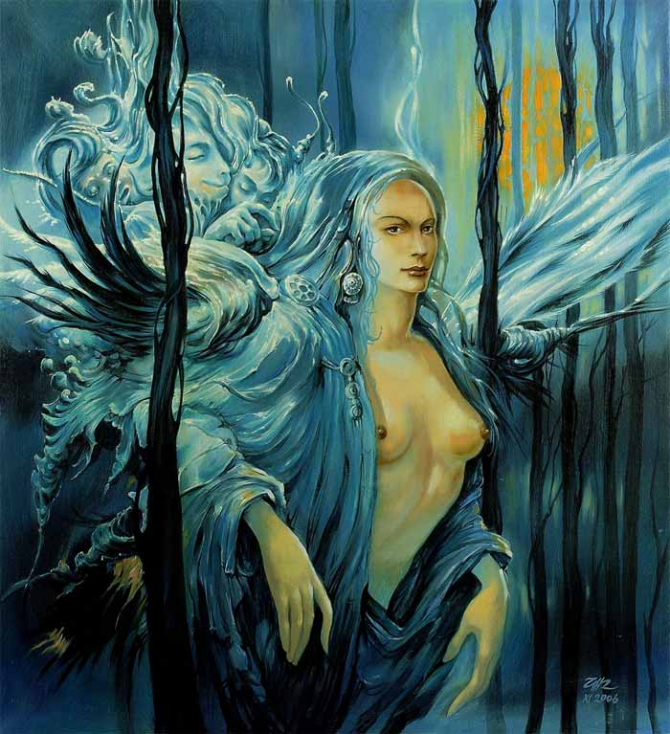
The Sirin is a mythological creature of Russian legends, with the head and chest of a beautiful woman and the body of a bird (usually an owl). According to the myth, the Sirins live "in the indigenous lands", near Eden or around the Euphrates River. They sang beautiful songs to the saints, announcing future joys. For men, however, birds were dangerous. The men who listened to their songs forgot everything, followed them, and finally died. Cannon, bell or other loud noises should be made to scare birds. Later (17th and 18th century), the image of the Sirins changed and began to symbolize the harmony of the world (since they live near paradise). People in those days believed that only very happy people could hear a Sirin, while only very few could see one because it is very fast and difficult to catch, like human happiness. She symbolizes eternal happiness and the happiness of heaven.
TOP 18:
Avalerion
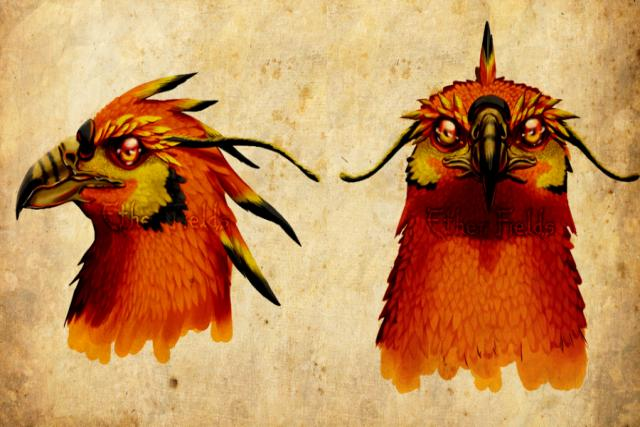
Avalerion or Alerion is a mythological bird. It was "rather small, but bigger than an eagle", and lived near the Hidaspes and the Indus. Only two birds exist at a time. A couple of eggs are laid every 60 years. After hatching, parents drown
TOP 17:
Caladrius
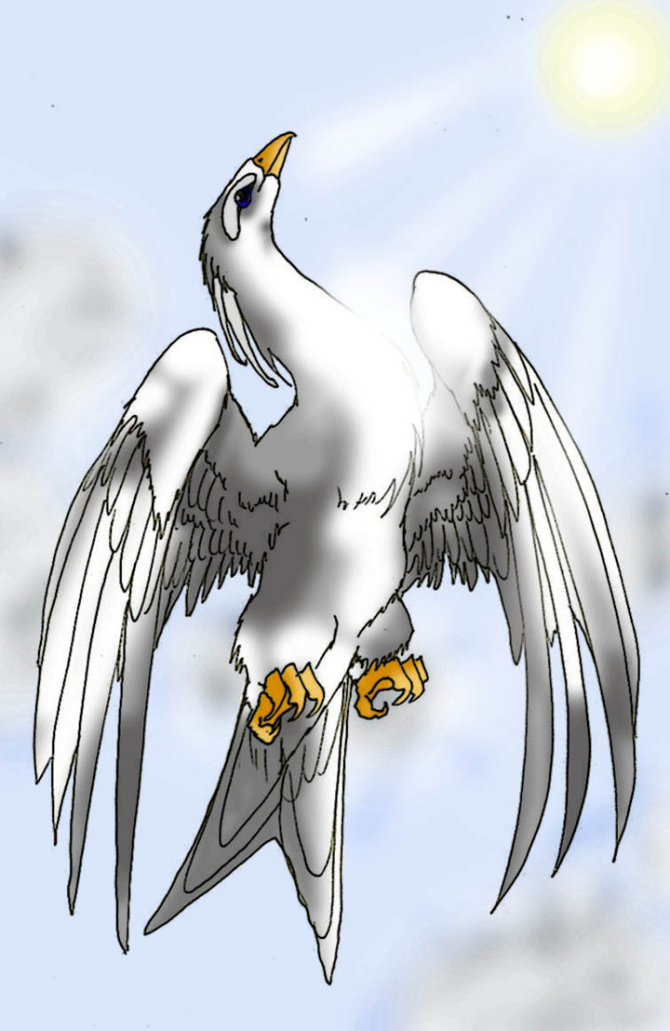
According to Roman mythology, the Caladrius is a snow-white bird that lives in the houses of the kings. Supposedly, the bird refuses to look at any patient who is not going to have a full recovery. Caladrius existed in Greek mythology under the name of Dhalion. It is said that she is also able to have the disease itself and then fly, dispersing the disease and healing herself and the sick person.
TOP 16:
Devil bird (Ulama)
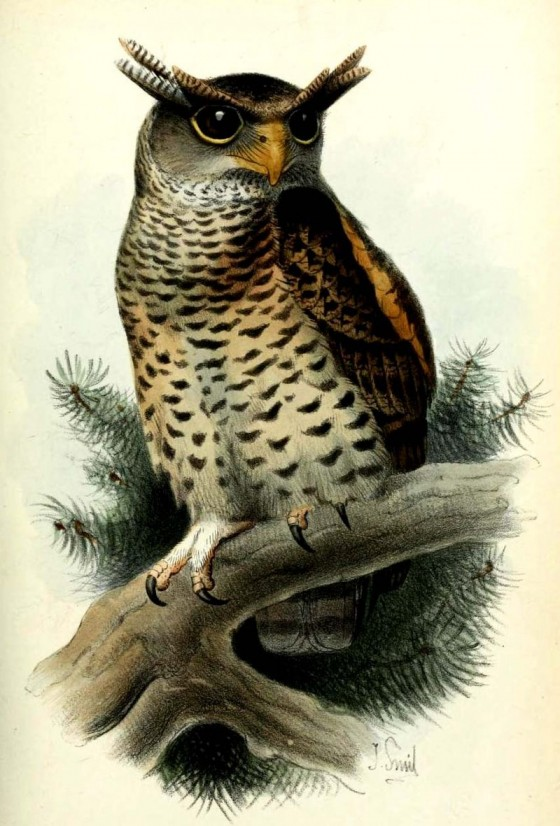
The devil bird known locally as Ulama is a mythological animal of folklore from Sri Lanka and India that is said to emit terrifying human screams. According to legends, it is believed that the cry of this bird announces the arrival of death. The origin of the myth is still a matter of debate, although the Owl of Nepal (Bubo nipalensis) seems to be the real basis of the legends, according to several studies carried out in 2001, and in which a specimen of the species was identified like the devil bird by some villagers. Another possible real species after the legend may be the Jungle Chotacabras (Caprimulgus indicus).
TOP 15:
Garudá
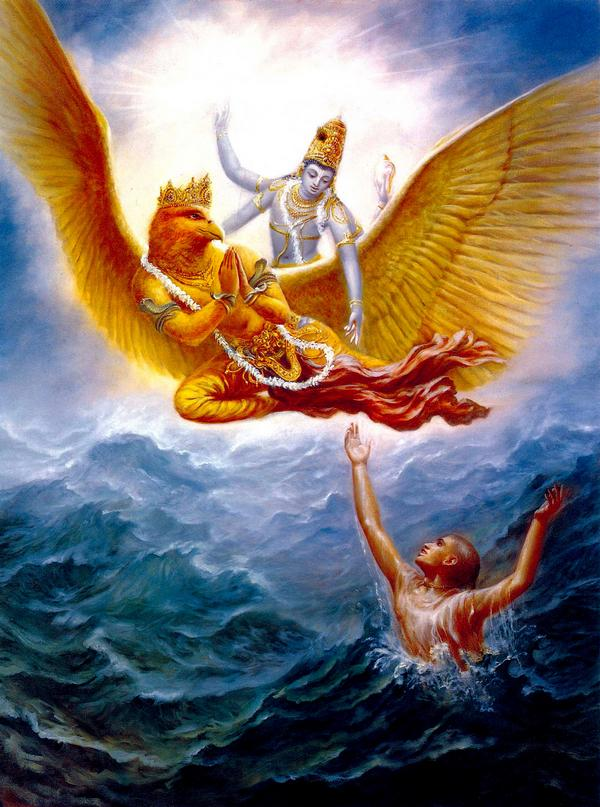
Garudá is a mythical bird, considered a lesser god (or demigod) in Hinduism and Buddhism. It is generally iconized as a giant and anthropomorphic eagle: golden-colored human body, white face, eagle's beak and large red wings. It is very old, huge and can cover the sunlight.
TOP 14:
Prometheus Eagle (Ethon)
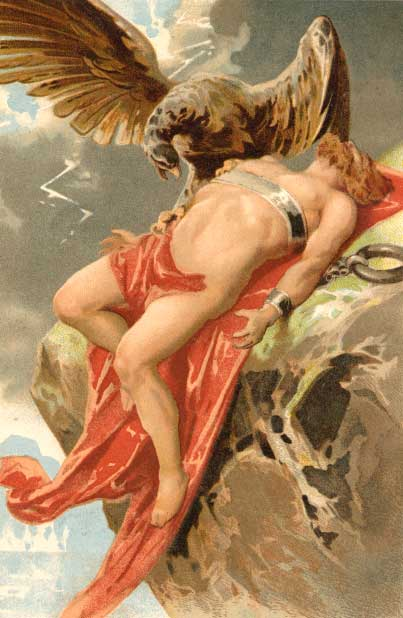
In Greek mythology, The Prometheus Eagle, The Kaukasios Eagle or Ethon was a giant eagle born from the monsters Typhoon and Echidna. As punishment for stealing the fire from Mount Olympus, Zeus chained Prometheus to a column in the Caucasus Mountains, where Ethon was eating his liver throughout the day, but during the night he grew again, repeating the operation for 30,000 years .
TOP 13:
Hugin and Munin
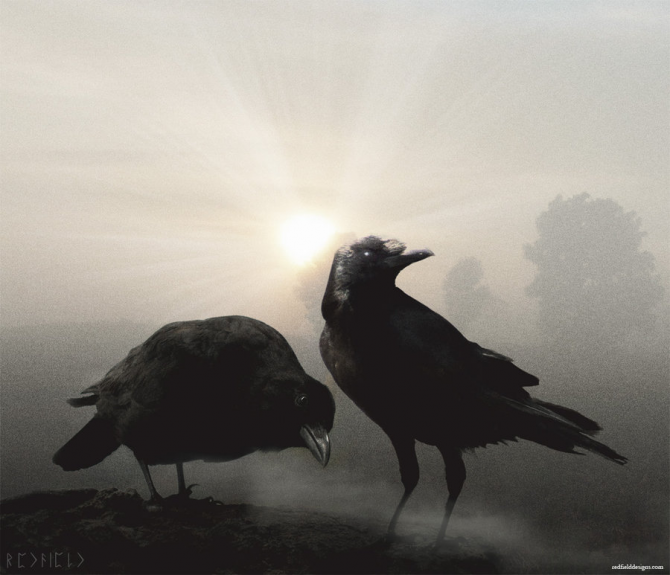
In Norse mythology Huginn and Muninn, or Hugin and Munin, are a pair of crows associated with the god Odin. Hugin and Munin traveled around the world collecting news and information for Odin. Hugin is the "thought" and Munin is the "memory". Both were sent at dawn to collect information and returned in the afternoon. They perched on the shoulders of the god and whispered in his ears all the news.
TOP 12:
Yatagarasu
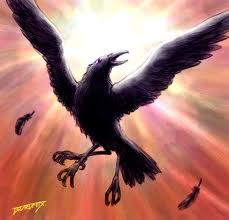
In Japanese mythology, this creature (Yatagarasu, yatsagarasu, yata-karasu; it is a kami with a raven or jungle crow, gigantic and black in color that has three legs. It should be noted that the versions that exist of these beings they are contradictory to each other and quite scarce in detail.According to some stories, he lives in the middle of the Sun. He is the guardian of warriors and divinities.It symbolizes divine Will or divine intervention in human affairs.Its three horns symbolize heaven, the being human and earth or, wisdom, courage and benevolence, it also symbolizes victory.
TOP 11:
Fenghuang
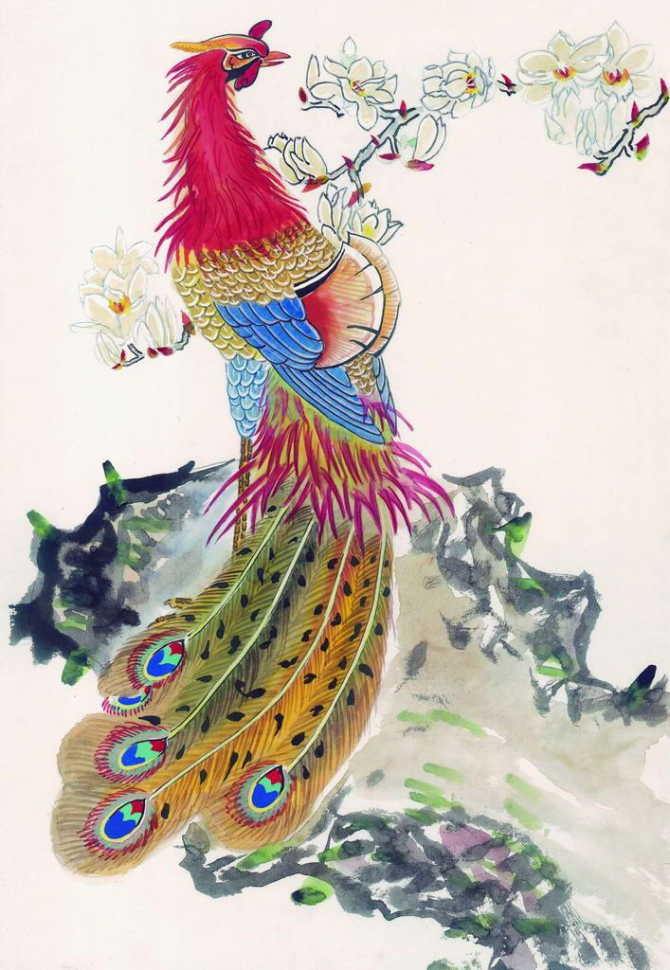
The Chinese phoenix is a Chinese mythological bird that reigns over the other birds. The males are called feng and the females, huang. At present, this gender dichotomy is no longer done and the two are encompassed in a single female gender (yin) that can be coupled with the Chinese dragon, which is considered male (yang). Fenghuang is also called the Augustus Rooster,
TOP 10:
Impundulu
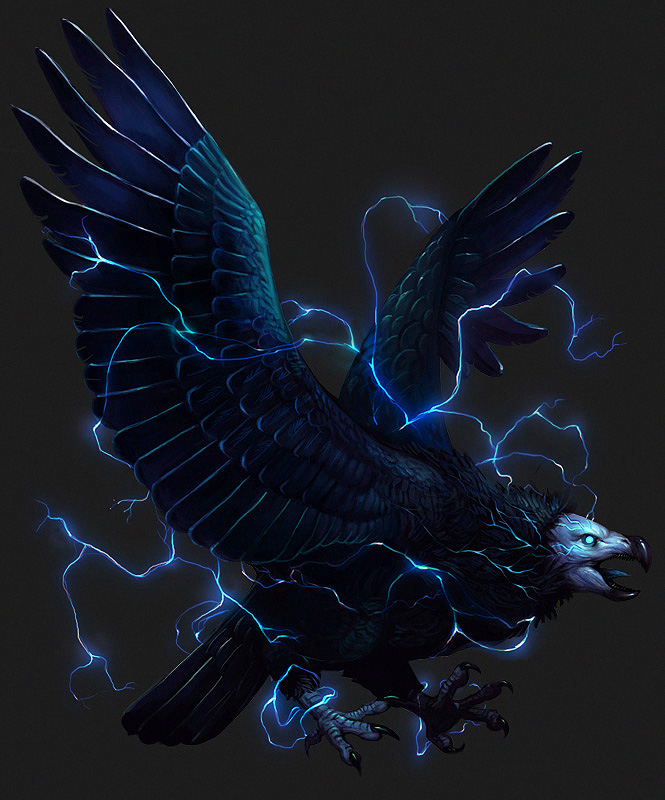
The Impundulu or bird ray is a mythological creature in the folklore of the South African tribes such as the Pondo, the Zulu and the Xhosa. The impundulu takes the form of a black and white bird, the size of a human being, who summons thunder and lightning with its wings and claws. It is a vampire creature associated with witchcraft, who was often the employee or relative of a witch or sorcerer, who attacked the enemies of the witch. It is said that they have an insatiable appetite for blood. Sometimes they take the form of a beautiful young man and seduce women.
TOP 9:
Alicanto
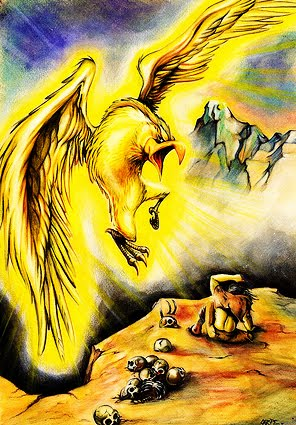
The Alicanto is a mythological creature from the desert of the Atacama Region, belonging to Chilean mythology. The Alicanto would be a bird of medium to enormous size with an almost magical beauty; It has large golden wings, a delicate head like that of a swan, a hunched beak, and long legs with large claws. It has the special characteristic that its wings shine at night with beautiful and metallic colors, and its eyes give off strange glares (lights); and when he can fly he would make an elegant luminous flight and his body would not cast any shadow on the earth.
TOP 8:
Aosaginohi
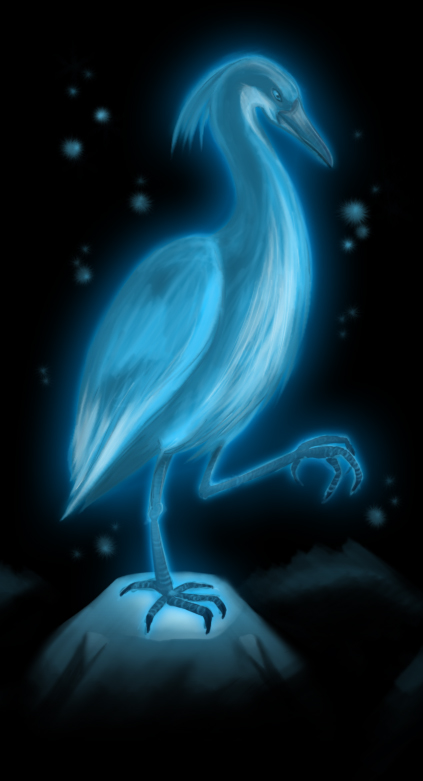
The Aosaginohi is a mysterious creature within the Japanese mythology in the shape of a heron. His name means blue fire Sagi. It is a blue bird that can be seen only at night like a fireball flying away from the observer. It is thought to possess magical qualities and that animals do not fear him.
TOP 7:
Roc
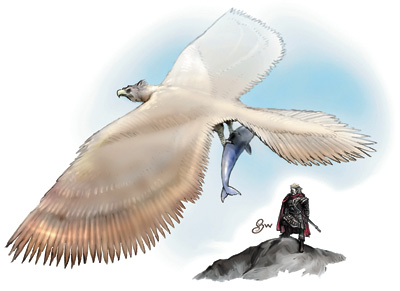
The Rocs or Rukh are gigantic birds of prey, often white, belonging to Persian mythology, capable of lifting an elephant with its claws
TOP 6:
Suzaku
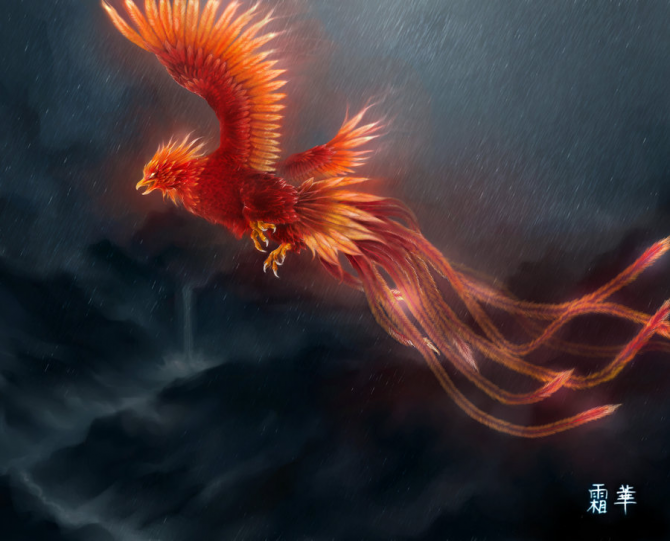
Suzaku one of the four divine monsters of Japanese mythology, representative of the cardinal points. Suzaku represents the south and its appearance is that of a red phoenix, which in turn represents the fire element. Suggested by XXJUVE96XX
TOP 5:
Hippogriff
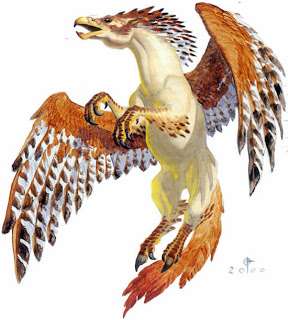
A hippogriff is an imaginary hybrid creature, with a half-horse and half-eagle appearance, which resembles a winged horse with the head and previous members of an eagle. His figure may come from the fabulous bestiary of the Persians and their simurgh, through the tap.
TOP 4:
Zhar-Ptitsa
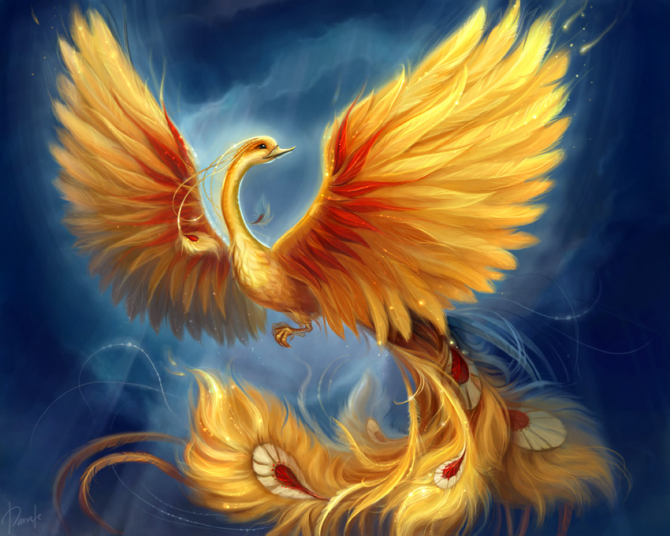
In Russian folklore, the bird of fire is a magical bird that glows from a distant land, and is a blessing and condemnation at the same time for its captor. The bird of fire is invariably described as a great bird of majestic plumage that glows with a red, amber and yellow light, like a bonfire that is only the past of a turbulent flame. The feathers do not stop glowing if they are removed, and a pen can illuminate a large room if it is not covered.
TOP 3:
Hræsvelgr
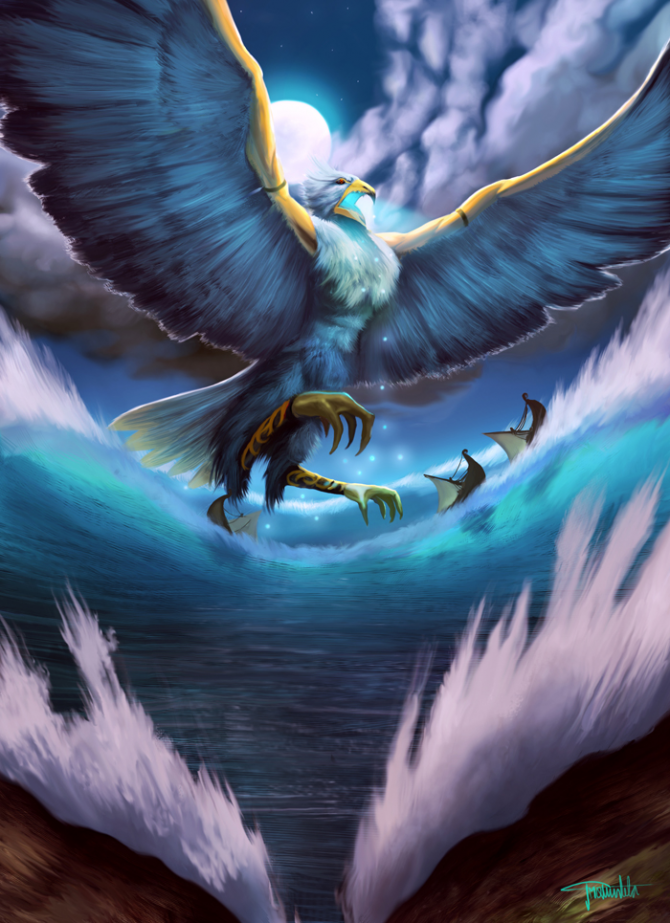
In Norse mythology Hræsvelgr ("Aspirator of corpses" or "Shipwreck current") is a giant that takes the form of an eagle. According to the poem Vafþrúðnismál of the poetic Edda, he sits at the end of the world (or the most northern border of the heavens) and causes the wind to blow when it flaps its wings in flight.
TOP 2:
Tap
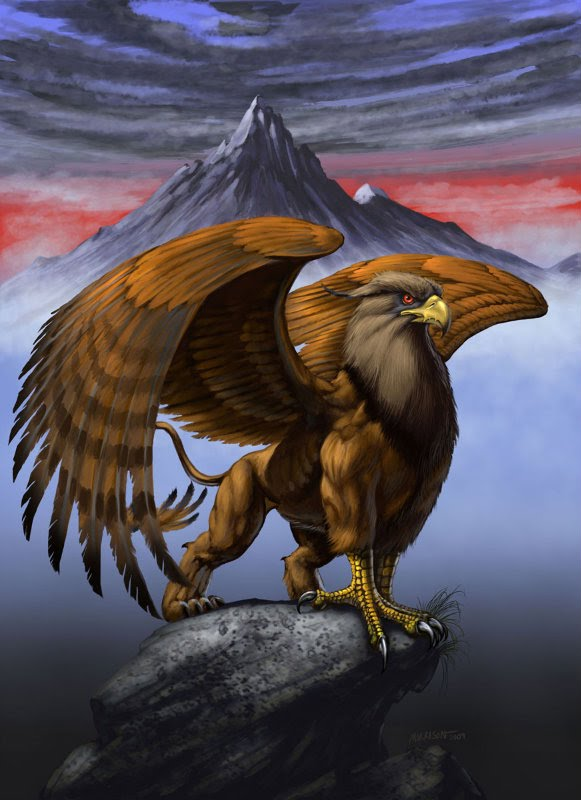
The tap is a mythological creature, whose upper part is that of a giant eagle, with golden feathers, sharp beak and powerful claws. The lower part is that of a lion, with yellow fur, muscular legs and tail.
TOP 1:
Phoenix
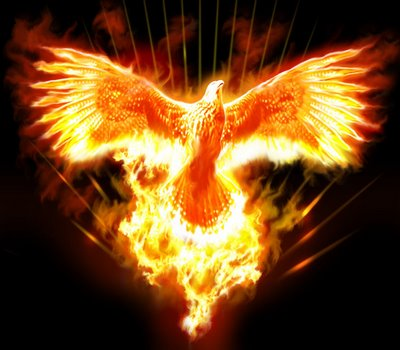
The phoenix, corresponding to the Egyptian Bennu, is a mythological bird the size of an eagle, with incandescent red, orange and yellow plumage, with a strong beak and claws. It was a fabulous bird that was consumed by fire every 500 years, and then resurfaced from its ashes. According to some myths, he lived in a region that comprised the area of the Middle East and India, reaching Egypt, in North Africa.

